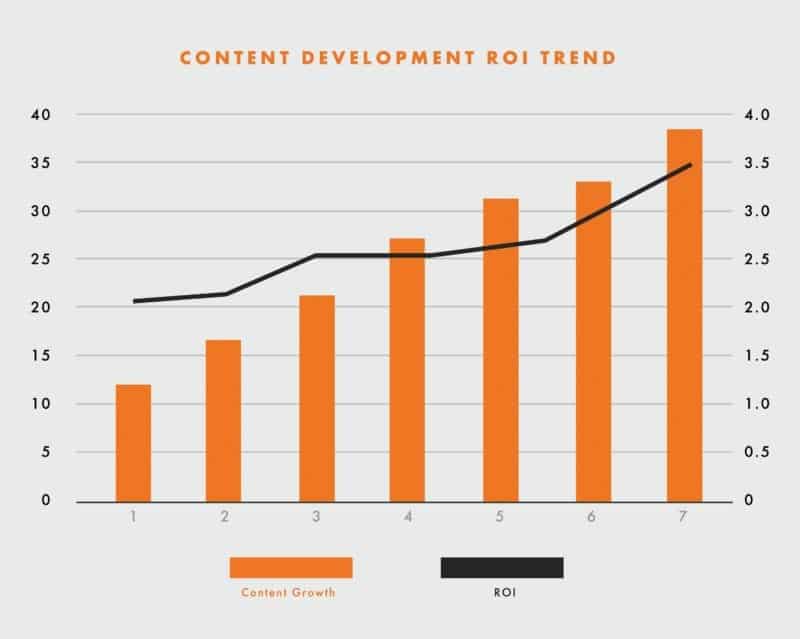
Content Marketing ROI and how to measure it
What is Content Marketing roi?
In its simplest form, ROI (Return On Investment) is a measurement used to evaluate the effectiveness of an investment. In this case, it’s about how much return is made relative to what is spent on a content marketing effort such as writing SEO friendly website content. The focus is on the money and time spent on creating and promoting content, and the success of the goals set.
More about Content Marketing:
Content marketing is a promotion technique where creativity meets the discipline of mathematics. It combines a brand’s right and left brain functions to grow profits and create success. Companies should always be looking for new ways to produce original content that will reach new and current clients through the use of publishers and agencies. So why should a business put focus on content marketing? For starters, it can effectively generate significant ROI for your business all through engagement and sales. Even if a particular type of content becomes more popular than anticipated, quantifying your content creation efforts is still important when reviewing the results in terms of cost and revenue. Here are the basics of determining content marketing ROI and understanding its value. We’ll also discuss ways to increase ROI using SEO, mistakes to avoid, and a few successful case studies.
Next, understanding basic calculations will help to determine what influences your content marketing ROI.
Measuring ROI
It’s all about crunching numbers, and the most basic form looks like this:
ROI = Return on Investment
Of course, there are many factors to consider for content marketing. For example, the return is contingent on, but not limited to:
- SEO and traffic
- Brand awareness and thought leadership
- Leads and revenue
The investment factors include, but are not limited to:
- Cost of producing content
- Software and tools
- Sourcing content externally
- Time
- Distributing content and advertising costs
SEO, for example, can be used as a tactic to generate a return on investment and can be sourced using various methods. It can be used to measure analytics that drive traffic, which can then be used to determine content marketing ROI. Because content marketing ROI is dependent on many factors, it’s all about the method chosen to review an increase in revenue.

Why measure the ROI of your content marketing efforts
Measuring ROI on content marketing provides substantial evidence for revenue, rather than only measuring site traffic, SEO, social media, and sales. Tracking these metrics helps determine how content marketing projects are performing, and the results should influence the content types to be producing. However, it doesn’t convey the value of the efforts put into the strategy. It is imperative for demonstrating the value of labor and what the return on your investment is.
There are some basic, yet specific reasons why you should measure your content marketing ROI:
- Secure additional investment for future content marketing plans
- Approval of marketing plans
- Establishing morale for future content marketing strategies
Content marketing ROI is valuable information for key stakeholders. They may not understand the ins and outs of the marketing strategy, but they will understand how it generates revenue.
Ways to increase ROI
There are many ways to increase the ROI of content marketing, but let’s take a look at how SEO can get the job done.
If you are looking to increase website traffic, creating a marketing plan that is specific to this platform will drive more users to the web page and ultimately increase content marketing ROI. For example, blog posts optimized well for searched keywords will rank higher for SEO. Targeting searchable keywords will bring in more traffic from a specific audience. SEO is your engine, and the content is the vehicle. Converting the traffic from your website into sales is a major key in expanding content marketing ROI.

Content Marketing Mistakes to Avoid
In order to maximize ROI for content marketing, a well-thought-out plan is essential. However, Here are a few pointers to help you avoid wasting time and money:
- Don’t forget the audience: For the content creator, it’s not about what they want to see but who will be seeing it. For instance, writing an SEO guest post is for the readers, not for the writer.
- Have accountability: Again, posts that are keyword-driven should be proofread carefully. If a blog post is riddled with errors, this can affect SEO and diminish brand credibility. Thus, resulting in a lower ROI.
- Avoid language confusion: With content like guest posts, where there are internal discussions between the writer and the reader, it’s important to choose your words wisely. Remember, the dialogue a writer has in their head may be conveyed differently via text. Using SEO research to determine how customers use terms compared to business owners can avoid misinterpretation.
See our guide to a successful Content Marketing Strategy.
For more ways to bring data and content creation together for your business, contact Beeby Clark + Meyler today!
Back to Posts
